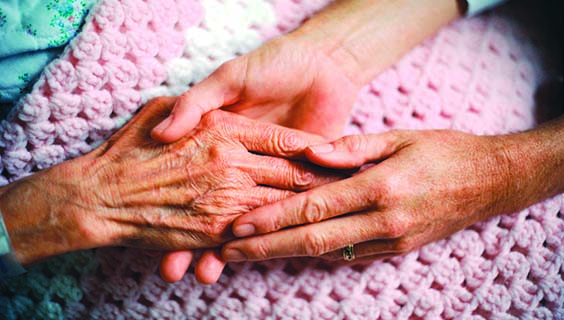When someone is nearing the end of their life, where they spend their final days matters a lot to them and their loved ones. In the UK, about half of all deaths happen in hospitals, even though many people would have preferred to die at home. Some might choose a hospice, but it depends on bed availability and the patient’s condition.
Surprisingly, not everyone knows that going into a care home or nursing home towards the end of life is an option, even if they’ve never lived in one before.
There are good reasons for choosing this type of place for the last days, weeks, or months of life. Care homes are experienced in this kind of care. Most residents are over 85 years old and have an average life expectancy of less than two and a half years, so caring for people nearing the end of their lives is something they know well.
Care homes are often called places “where people come to live, not to die”. They try to involve residents in activities, like music or outdoor events, whenever possible. This can make receiving end-of-life care in a care or nursing home a nicer and more homely experience for both the patient and their family, even though it’s a sad time. Even though the patient is very ill, care homes still try to improve their quality of life and support their family and friends.
Care homes can be like a middle ground between a hospital, where there are lots of trained medical staff but it’s not a familiar place, and being at home, where everything’s familiar but there might not be much professional support. When someone’s close to the end of their life, family members might want to do everything for them themselves, rather than just visiting them in hospital or a hospice. But this can be emotionally tough, and they might worry about making mistakes, especially if the patient lives longer than expected.
Talking about death is hard. If the person already lives in a care home, staff might have already talked about what they want to happen at the end of their life. This can be a big relief, because residents and their families might not want to talk about it when they’re first coming to terms with being so ill. This planning can stop them from being moved to a hospital when they don’t want to, and it means they can stay where they are and be made comfortable. Even if they haven’t talked about it before, care home staff often know their residents really well and can guess what they’d want. This can be a comfort to families who don’t know what to do, especially if the resident got very ill very quickly.
Providing end-of-life care in a care or nursing home can be tricky because lots of different professionals from different places need to work together. This can include doctors, nurses, and hospice staff, all of whom have different schedules and pressures. But having meetings online, like on Zoom, has made this easier since the pandemic. Different professionals can add their thoughts to the care plan at different times.
Thinking about how much end-of-life care in a care home might cost can be worrying for patients and families. Care homes are privately owned, so there’s a cost for staying there and getting care, which isn’t there in a hospital or hospice. But sometimes, the NHS can pay for end-of-life care in a care or nursing home. More information about this can be found on the NHS website.
In the last ten years, three of my family members needed end-of-life care. One went from hospital to a nursing home, one went from home to hospital and then to a hospice, and the most recent stayed at home the whole time, with family carers and professional help. In my experience, a nursing home meant I could be a family member instead of just a nurse, a role I found really hard. The staff got to know my family member quickly, knew when they were close to dying, and made sure we knew too so other family could come. They also helped with things that have to happen right after someone dies, like telling the undertaker.
Whatever someone chooses, the most important thing is what the patient wants and what’s best for them. Some people might prefer a hospital or being at home, but for those who aren’t sure, a care home can be a good option that’s like the best of both worlds.




